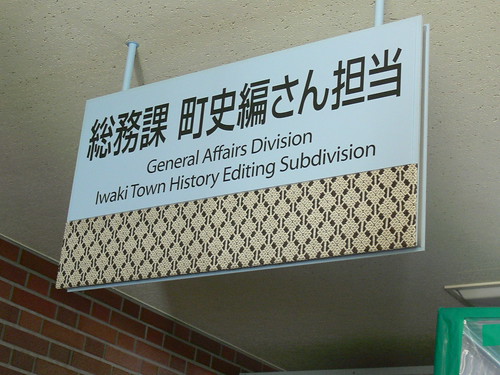The Rice University Computer
There were two major purposes in designing the Rice machine. The first was to provide a platform on which members of the Rice community could do research that would have been impossibly time-consuming without access to a computer. This was, in fact, the major reason that the project was started: Zevi Salsburg wanted a machine as powerful as Los Alamos's MANIAC II to simulate fluid flow. He did not, however, have any desire to move to Los Alamos, and therefore needed a computer to be built at Rice. The other goal of the machine was to do research into how computers should be built. In the years following John von Neumann's death, the Atomic Energy Commission became quite interested in funding computer research: Salsburg's request came at a time when the AEC's goals could be better met by funding the development of a new system than by offering to build a copy of MANIAC II or to buy a stock IBM computer.
http://www.cs.rice.edu/History/R1/
Al-Andalus - Wikipedia, the free encyclopedia
The name more generally describes parts of the Iberian Peninsula and Septimania governed by Muslims (given the generic name of Moors), at various times between 711 and 1492, though the boundaries changed constantly in wars with Christian kingdoms.
http://en.wikipedia.org/wiki/Al-Andalus
Ijazah - Wikipedia, the free encyclopedia
Hypothesis on origins of doctorate
http://en.wikipedia.org/wiki/Ijazah#Hypothesis...
The Anatomy of a Search Engine
In this paper, we present Google, a prototype of a large-scale search engine which makes heavy use of the structure present in hypertext. Google is designed to crawl and index the Web efficiently and produce much more satisfying search results than existing systems. The prototype with a full text and hyperlink database of at least 24 million pages is available at http://google.stanford.edu/
http://infolab.stanford.edu/~backrub/google.html
Mercury delay line memory
At one end of the tube, a transducer converted the electrical pulses to sound, which propagated through the mercury to the other end. At that point, another transducer converted the sound to electricity and sent it back to the beginning. The conversion to sound, which propagates much slower than electricity, slowed down the digital data a fraction of a second and caused the device to function as storage
http://encyclopedia2.thefreedictionary.com/Mer...
Antique Computers - Ed Thelen
Facts and stories about Antique (lonesome) Computers
http://ed-thelen.org/comp-hist/index.html
bitsavers.org
As of June, 2012 there are over 21,500 documents containing over 2.24 million pages in the archive.
http://bitsavers.informatik.uni-stuttgart.de/i...
Whittington NHS Trust Website: The Beatles greatest gift... is to science
As a direct result of The Beatles’ success, Dr Timmis claimed, the scanner’s inventor, Sir Godfrey Hounsfield, was able to devote about four years developing the scanner from its 1968 prototype, to something that could be used in a clinical setting. His work was done in the Central Research Laboratory, a facility near Heathrow airport that was part of the EMI Group. Having sold 200 million of the Fab Four’s singles, (at seven inches, almost enough vinyl to stretch the length of the equator) the Beatles’ record company, EMI, was able to fund Hounsfield to do his research and the scanner was ready be used in hospitals in the 1970’s.
http://www.whittington.nhs.uk/default.asp?c=28...
C R Y P T O N O M I C O N
In the Beginning was the Command Line
http://www.cryptonomicon.com/beginning.html
The Electronic Monk - A short (and slightly biased) history of collaborative editing
Like most of the shiny things we take for granted today, (non-naive, i.e. lock-free) collaborative editing originated at - wait for it - Xerox Parc, as part of the collaborative work enviroment project “Jupiter”, headed by Pavel Curtis. Besides collaborative whiteboarding and other stuff, Jupiter included concurrent (text) editing based on Operational Transforms, as documented in the paper “High-Latency, Low-Bandwidth Windowing in the Jupiter Collaboration System”.
http://log.emonk.net/post/6539765532/a-short-a...
The Original 1969 Children’s Television Workshop (CTW) Pitch Film For Sesame Street
Here’s the original Children’s Television Workshop (CTW) 1969 pitch film (in 3 parts) produced by Joan Ganz Cooney
http://laughingsquid.com/childrens-television-...
Dictionary of the History of Ideas
The Dictionary of the History of Ideas: Studies of Selected Pivotal Ideas, edited by Philip P. Wiener, was published by Charles Scribner's Sons, New York, in 1973-74.
http://etext.virginia.edu/DicHist/dict.html
To My Old Master, Colonel P.H. Anderson, Big Spring, Tennessee
P.S. -- Say howdy to George Carter, and thank him for taking the pistol from you when you were shooting at me.
http://www.digitalhistory.uh.edu/black_voices/...
Internet Archive: Details: Pat O'Daniel and his Hillbilly Boys
I like Mountain Music, Good ole Mountain Music, Played by a real hillbilly band. I like bread and biscuits, Big, white fluffy biscuits, Hillbilly flour makes 'em grand. So while we sing and play And try to make folks happy, We hope you'll say, Please pass the biscuits, pappy
http://www.archive.org/details/Pat_ODaniel_and...
Giovanni Caselli
The pantelegraph developed by Giovanni Caselli was a system of sending and receiving images over long distances by means of telegraph. The images transmitted by telegraph were reproduced using electrochemistry. This system was actually the first prototype of a fax machine.
http://web.archive.org/web/20060427151658/chem...
We just launched a cool new tool at Pyra. It's called Blogger.
Except the week Organizine lived , I have always used Blogger.
